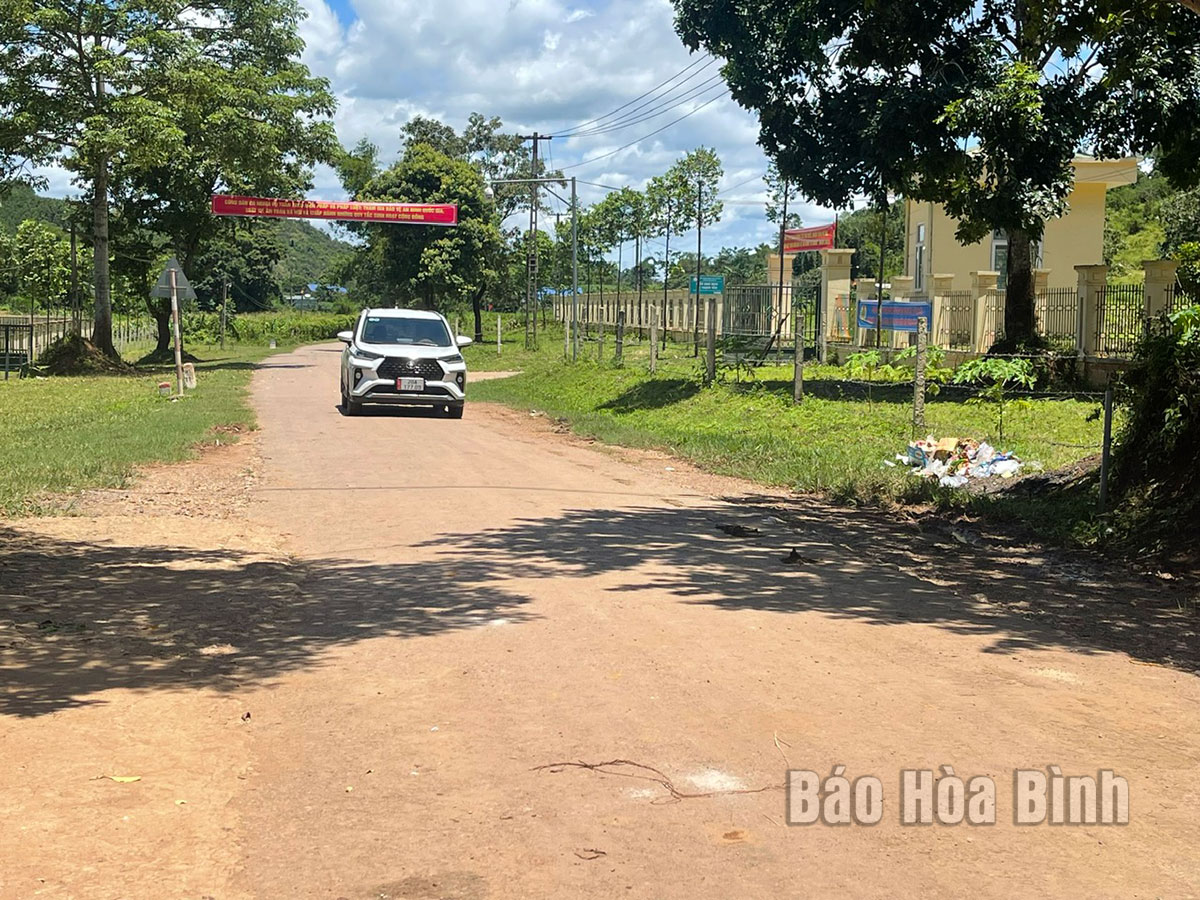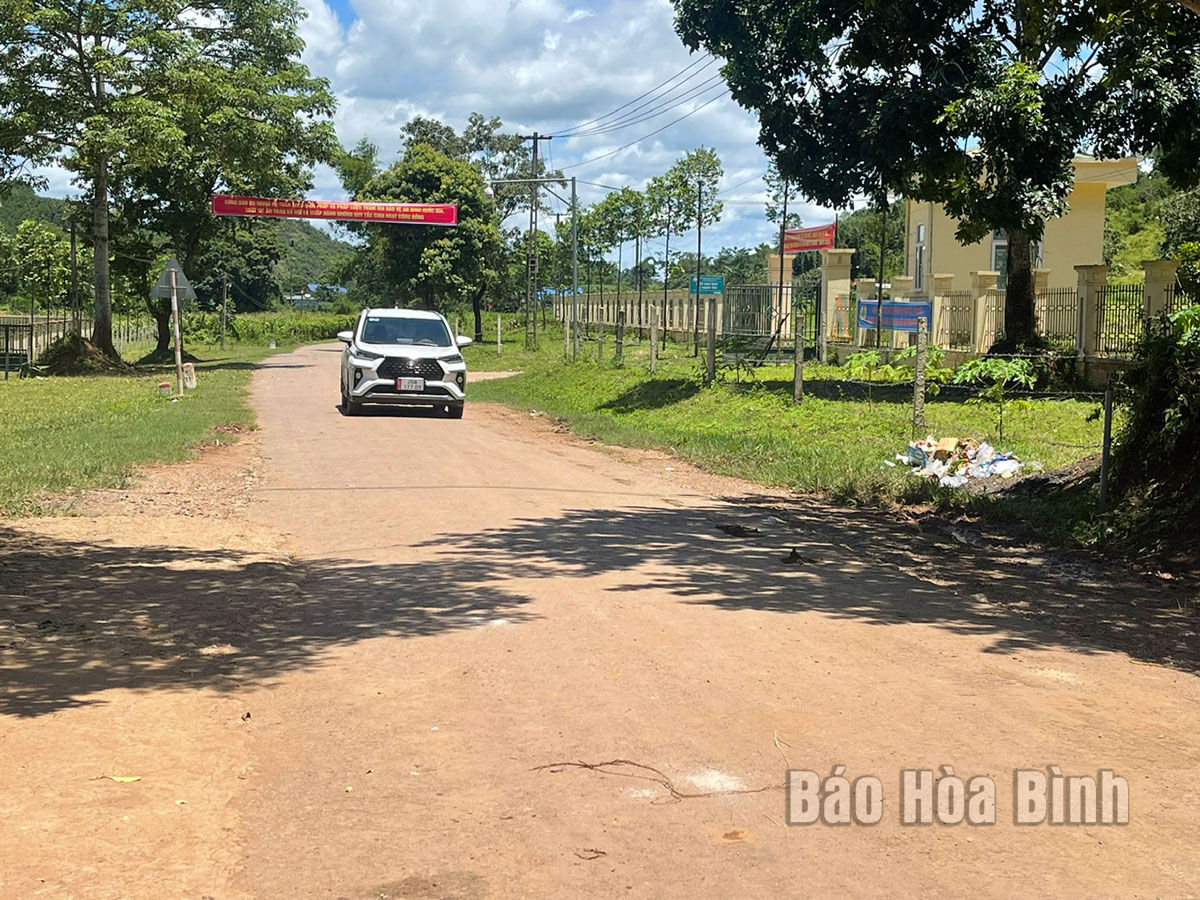
(HBO) – Capitalising on local socio-economic strengths, the Party organisation, authorities and people of Thach Yen commune, which is home to Cao Phong – Thach Yen revolutionary base, have made efforts to promote the building of new-style rural areas, helping create a facelift to the locality.
Investments have been made to develop
socio-economic infrastructure in Thach Yen commune, Cao Phong district.
According to Bui Minh Anh, former Secretary of
the Party organisation of Thach Yen commune, Cao Phong – Thach Yen is one of
the four revolutionary bases of Hoa Binh province, which belongs to the
Hoa-Ninh-Thanh revolutionary zone. It was recognised as a national historical
relic site by the Ministry of Culture and Information in 1996.
In late 1944, the regional Party Committee of
Bac Ky assigned Vu Tho to the region to popularise the nation’s revolution
among local ethnic communities, which paved the way for the establishment of
the Cao Phong – Thach Yen revolutionary base. In July 1945, Tho selected 30
young, tough and enthusiastic militiamen for military training courses in Cao
Phong – Thach Yen region.
On August 23, 1945, the delegation of the Cao
Phong – Thach Yen base coordinated with the army in Lac Son to enter Phuong
Lam, joining revolutionary forces in the whole province to seize power from the
enemy.
Over the years, upholding the revolutionary
tradition, the Party organisation, administration and locals of Thach Yen and
Hop Phong communes have bolstered solidarity to optimise the localities’
potentials and advantages to boost socio-economic development, improve locals’
living conditions, and ensure security and order.
Travel has been made easier for local residents
as roads have been concretised, while farmers are enjoying bumper crops of
fruits.
The commune has paid due heed to developing
culture, education and health care, with three out of the four schools meeting
the national standard at the first level, local medical station meeting
national standard, and more than 70% of households granted the title "cultured
families”.
Vice Chairman of the communal People’s Committee
Bui Van Hau said local livelihoods have been improved, and social security
maintained over the past time.
Thach Yen sees its economy grow 13.85%, and per
capita income reach 26 million VND (1,078 USD) a year. As the commune has met
15 out of the 19 new style rural area criteria, it is working to complete the
task of the new-style rural area building by 2024.
The Standing Board of the Hoa Binh provincial Party Committee has agreed in principle on a proposal by the Standing Board of the Party Committee of Hoa Binh city to gather feedback on the city’s 1:2000 zoning plan, which forms part of its broader urban development strategy.
Hoa Binh province has made notable progress in public administration reform and digital government development, with the satisfaction index among citizens and businesses reaching over 84%, according to recent government evaluations.
Thanks to great efforts by local authorities in recent times, the governance and public administration performance of Mai Chau district has been significantly improved.
In the afternoon of June 6, the Party Committee, the People's Council, the People's Committee and the Fatherland Front of Lac Son district solemnly held a meeting to celebrate the 139th anniversary of the district's founding (1886–2025) and the 79th anniversary of the establishment of the district's Party Committee (1946–2025). There was the attendance of Mr. Bui Van Thang, the Vice Chairman of the Provincial People's Council; Mr. Quach Tat Liem, the Vice Chairman of the Provincial People's Committee; Ms. Dang Bich Ngoc, the Deputy Head of the National Assembly Delegation of the province; as well as the former leaders of the province and district through various periods, who are the natives of the district.
Implementing the Politburo’s Resolution No. 57-NQ/TW on breakthroughs in science – technology, innovation, and digital transformation is a golden opportunity for the northern mountainous province of Hoa Binh to renew growth model, improve competitive edge and shorten digital gap.
Resolution 57-NQ/TW, issued by the Politburo on December 22, 2024, identifies sci-tech, innovation, and digital transformation as strategic breakthroughs to build a developed and prosperous nation. In Hoa Binh province, this spirit is not just a slogan, it’s being put into action through concrete initiatives that form a "new development triangle”: digital citizenship, digital economy, and digital administration.



